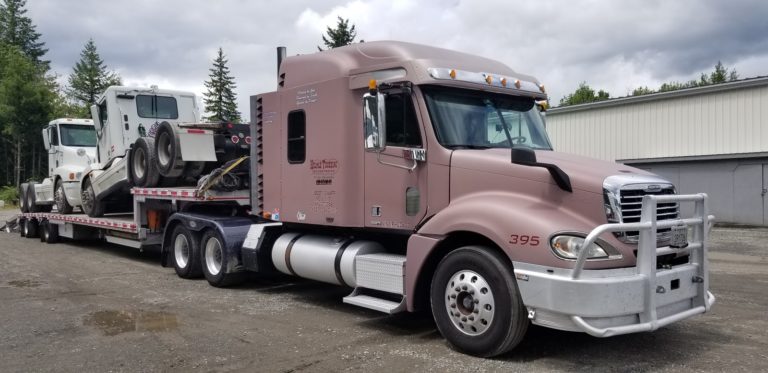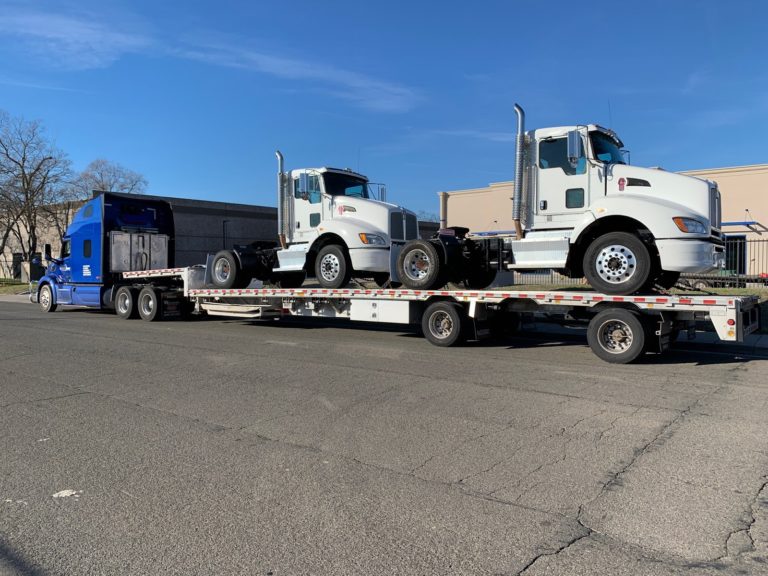The Bridge Table Formula and What it Means in Transport
A bridge formula table has many names: the Federal Bridge Formula, Bridge Formula B, and the Federal Bridge Gross Weight Formula. It’s a mathematical formula utilized by the Department of Transportation (DOT) to help determine the gross weight of a vehicle based on the axle number and their spacing. The bridge formula table was initially created in 1975, by Congress and, as suggested by its name, the formula was designed to limit the weight-to-length ratio of a commercial vehicle crossing a bridge.
The appropriate weight distribution for your vehicle and its cargo can be accomplished in one of two ways. You can spread the shipment’s weight over multiple additional axles, or you can increase the distance between the existing axles to become compliant.

How To Achieve The Correct Bridge Weight
The bridge weight formula takes into account three different weight factors:
– Gross vehicle weight
– Single axle weight
– Tandem axle weight
The gross vehicle weight (GVW) is the combined weight of the truck, trailer, and cargo. Typically, the Federal GVW restrictions mean that travel on Interstates is restricted to 80,000 lbs or less unless the bridge formula dictates otherwise.

The single axle weight limit on Federal Interstates is 20,000 lbs if the axles are spaced not more than 40′ apart. Tandem-axle weight limits take into account the use of multiple axles, and the Interstate weight limit becomes 34,000 lbs if the shafts are less than 97′ apart. For oversized equipment, axles are spaced further apart to allow for better weight distribution. Some Interstates may have higher or lower weight limits, as some of the weight limits have been ‘grandfathered,’ meaning that original weight restrictions have been kept despite later amendments to the formula.
The formula for the overall weight limit is determined by weight to the nearest 500 lbs using the method: W = 500 [LN divided by N-1 plus 12N plus 36]. W is the gross weight, L is the distance in feet between outer axles and other axles, N is the number of axles in the group.
Who Checks Bridge Formula Compliance?
Compliance with federal regulations is checked at weigh stations throughout the United States. You’ll find weigh stations at state borders or on the outskirts of any major cities, where the need for checking compliance is greatest. At these stations, the vehicle will be both weighed and measured by Federal officials who will indicate if your shipment exceeds the legal limits.
There is, however, one exception to the bridge formula table, and this applies to tankers. The exception was requested by the American Trucking Association, to allow standard five-axle semi-truck configurations to utilize the maximum gross weight limit despite the configuration falling outside the accepted standard. In other scenarios, if the bridge formula table is exceeded, travel options become restricted.
Advantages of the Bridge Formula Table
The bridge formula table was designed to prevent heavy vehicles from unwittingly damaging both roadways and bridges. The formula is most often used to calculate a bridge weight formula that’s relevant to drivers of tractor-trailers and buses. However, it is of more importance to truck drivers since they often carry much heavier loads.
One of the significant advantages of the bridge formula table is that it dictates which bridges are safe to travel without risking a bridge collapse. They’re also used to protect dirt and gravel roads from repeated damage caused by the large, solid wheels on heavy trucks. The formula also prevents damage caused by the concentrated weight of shorter vehicles, helping haulers to avoid premature destruction of crucial highway infrastructure.
Get Your Equipment Transport Quote Now!
Step 1: Fill Out Quote Form
Fill out the short & easy quote form.
Step 2: Speak With An Agent
We’ll pick up your heavy equipment or vehicle.
Step 3: Get Transported On Time
We deliver on time so you can get back to work.